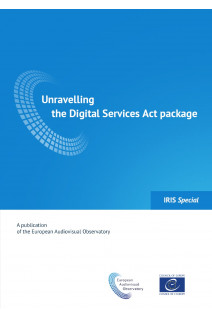1. General introduction 2. The Digital Services Act and social media power to regulate speech: obligations, liabilities and safeguards
2.1. Introduction
2.2. Public and private speech regulation
2.3. Intermediary Liability: From the E-Commerce Directive to the DSA
2.4. Liability regimes under the DSA
2.4.1. Introduction
2.4.2. Notice-and-action mechanisms
2.4.3. Own-initiative investigations
2.4.4. Interpretation issues around Article 6 DSA
2.5. Assessment and mitigation of systemic risks
2.5.1. Assessment of systemic risks
2.5.2. Mitigation of systemic risks
2.6. Conclusions
3. Regulating the moderation of illegal online content
3.1. Scope and structure of this chapter
3.2. The independence of cyberspace: the e-Commerce Directive
3.3. The beginning of the end: The emerging EU regulatory framework for online content moderation
3.3.1. Regulation of the moderation of specific types of online content
3.3.2. Regulation of moderation by specific types of digital intermediaries: Video-sharing platforms
3.3.3. Regulation for all: A re-interpretation of the e-Commerce Directive
3.3.4. Summary of the EU regulatory framework and current practices of online moderation
3.4. The end of the independence of cyberspace: The Digital Services Act
3.4.1. The proposed DSA and content moderation
3.4.2. Asymmetric obligations
3.5. Concluding remarks
4. From risk to reward? The DSA’s risk-based approach to disinformation
4.1. Introduction
4.2. The disinformation landscape
4.2.1. Evolving definitions
4.2.2. Broader regulatory and policy frameworks
4.3. Introducing the DSA’s risk-based approach
4.4. Mitigating risks
4.5. Ensuring oversight and transparency
4.6. Risky business? The risk-based approach in action
4.7. Conclusion
5. The Digital Services Act and copyright enforcement: The case of Article 17 of the DSM Directive*
5.1. Introduction
5.1.1. The shared history of the DSM Directive and the DSA
5.2. Structure and content of Article 17 of the DSM Directive
5.2.1. Polish challenge to Article 17
5.3. The relationship between Article 17 and the DSA: What is special about it?
5.3.1. Notion of OCSSP: EU establishment, accessibility, and targeting
5.3.2. The specific liability mechanism of Article 17(4)
5.3.3. Safe harbour availability
5.3.4. The complaint and redress mechanism and protection against misuse
5.4. Conclusion
6. The proposal for a Digital Markets Act (DMA): On gatekeepers, fairness and transparency in the online environment
6.1. Introduction
6.2. The DMA in a nutshell
6.3. Scope of Application: Broad but few
6.3.1. Actors addressed
6.3.2. Designation procedure
6.4. Obligations and Prohibitions or ‘Do’s and don’ts’ for Gatekeepers
6.4.1. Structural aspects
6.4.2. Close-up on some of the obligations
6.5. Enforcement: A centralised approach
6.6. Conclusion
7. Gatekeeping in the audiovisual sector: economic background,competition, and regulation
7.1. Introduction
7.2. Competition and gatekeepers in the digital economy: The underlying economics
7.3. Competition and gatekeeping in streaming markets
7.4. Regulatory implications for audiovisual streaming markets from an economic perspective
7.4.1. Self-Preferencing
7.4.2. Vertical Integration
7.4.3. Summary
8.Summaries of the series of EAO events on the DSA Package
8.1. A first look at the new EU rules on online services and their possible impact on the audiovisual industry
8.1.1. Setting the scene: Overview of the new Digital Services Act Package
8.1.2. The experts’ corner: Competition, liability and interaction between the DSA Package, the AVMS Directive and the DSM Directive
8.1.3. The stakeholders’ panel: The DSA, a much-needed update of an outdated legal framework
8.2. Webinar #1 - Transparency of content moderation on social media
8.2.1. Setting the scene
8.2.2. The expert’s corner: Online platforms’ moderation of illegal content online
8.2.3. The stakeholders’ panel: Content moderation from the perspective of platforms, consumers and media NRAs
8.3. Webinar #2 - Gatekeepers in the DSA Package: What about VoD?
8.3.1. Setting the scene
8.3.2. The expert’s corner: Regulatory and competition-related aspects
8.3.3. The stakeholders’ panel: The VoD market, a competitive and heavy regulated market without gatekeepers?
8.4. Webinar #3 - Copyright and the digital services act
8.4.1. Setting the scene
8.4.2. The experts’ corner: Risks and opportunities of the DSA
8.4.3. The stakeholders’ panel: Interplay between the DSA and copyright, risks, challenges, and opportunities
8.5. Webinar #4 - The Digital Services Act and the fight against disinformation
8.5.1. Setting the scene
8.5.2. The expert’s corner: Risks and opportunities for the fight against disinformation
8.5.3. The stakeholders’ panel: Tackling disinformation, freedom of expression and access to data
8.6. List of participants
Figure
Figure 1. DSA obligations
Tables
Table 1. EU regulatory framework on moderation of illegal content online
Table 2. Working definitions of disinformation




